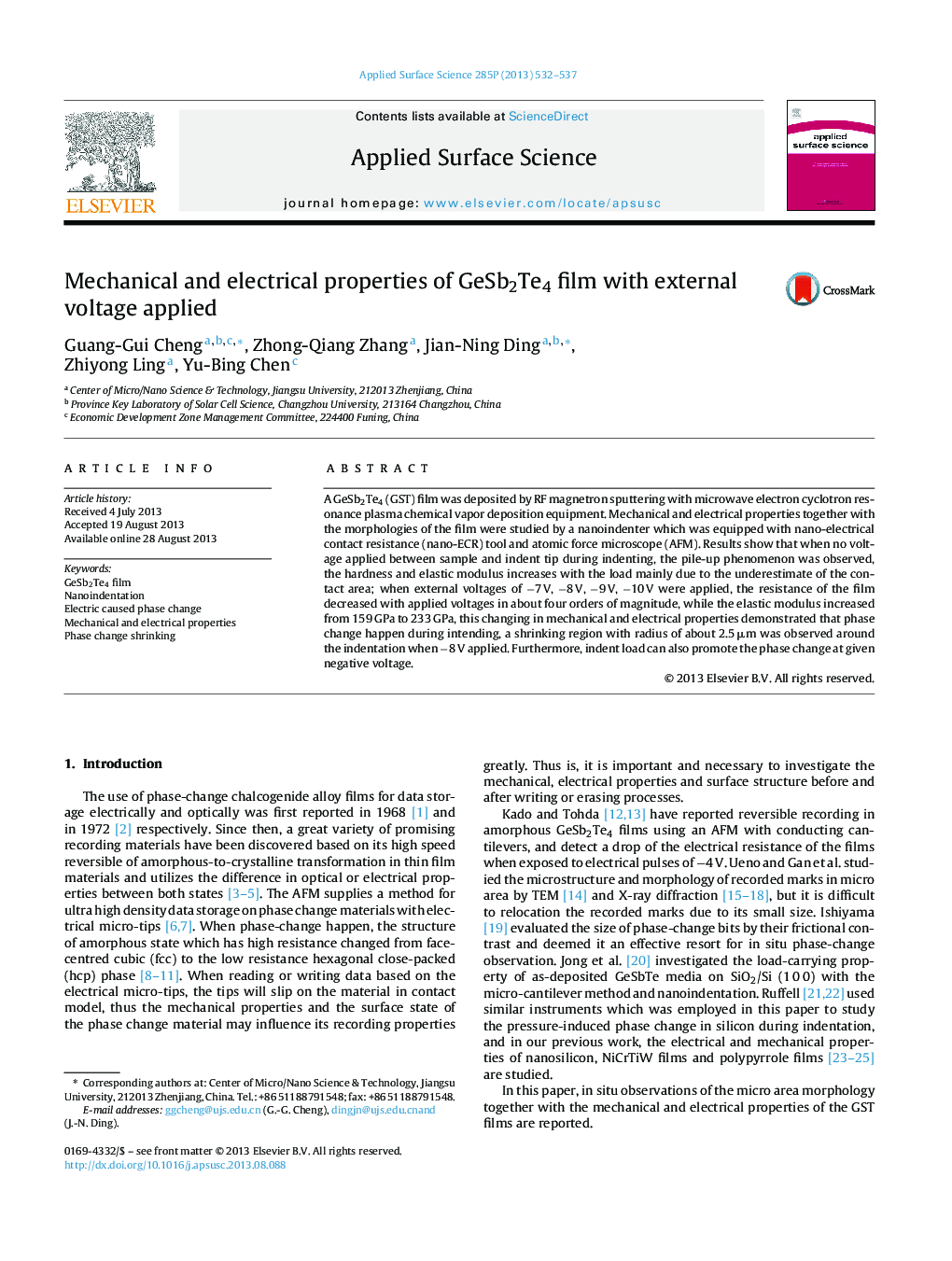| Article ID | Journal | Published Year | Pages | File Type |
|---|---|---|---|---|
| 5352360 | Applied Surface Science | 2013 | 6 Pages |
Abstract
A GeSb2Te4 (GST) film was deposited by RF magnetron sputtering with microwave electron cyclotron resonance plasma chemical vapor deposition equipment. Mechanical and electrical properties together with the morphologies of the film were studied by a nanoindenter which was equipped with nano-electrical contact resistance (nano-ECR) tool and atomic force microscope (AFM). Results show that when no voltage applied between sample and indent tip during indenting, the pile-up phenomenon was observed, the hardness and elastic modulus increases with the load mainly due to the underestimate of the contact area; when external voltages of â7 V, â8 V, â9 V, â10 V were applied, the resistance of the film decreased with applied voltages in about four orders of magnitude, while the elastic modulus increased from 159 GPa to 233 GPa, this changing in mechanical and electrical properties demonstrated that phase change happen during intending, a shrinking region with radius of about 2.5 μm was observed around the indentation when â8 V applied. Furthermore, indent load can also promote the phase change at given negative voltage.
Related Topics
Physical Sciences and Engineering
Chemistry
Physical and Theoretical Chemistry
Authors
Guang-Gui Cheng, Zhong-Qiang Zhang, Jian-Ning Ding, Zhiyong Ling, Yu-Bing Chen,
